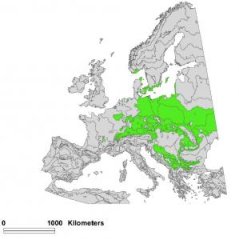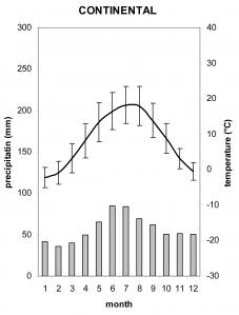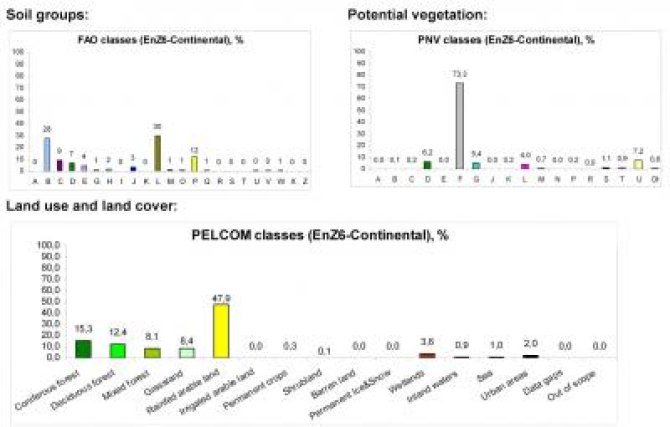
Continental (CON)
The Environmental zone Continental is mostly on the plains and lowlands of Central and Eastern Europe and uplands and low mountains of the Balkan peninsula. It is situated from the Ardennes in the west to the Ukraine in the east. The climate is continental, with clear summer maximum of precipitations and 15-20° difference in the average monthly temperatures.

The growing season lasts 227 (213-257) days, the sum of active temperatures is 3294° C (3037°- 3049°). The highest values are reached in the continental parts of the Balkan peninsula.
The tectonic structures that underly this zone is partly Alpine in the lower mountains. The dominating Pre-Quaternary geological formations are Palaeocene and Neocene, in the west of also Cretaceous, Jurassic and Silurian. The southwestern Scandinavia falls to Karelian structures of the Baltic Shield. The part of the continental zone on the Russian Plain contains Pliocene, Miocene (Mazur Lakeland, Podlaska Lowland, Central Pripiat’ Palesse, South of Podol Upland), Paleocene (West and East Pripiat’ Palesse) and Cretaceous (North Podol Upland) deposits. The Great Polands’ Plain and Silesian Upland are on the mantle of Epi-Palaeozoic platform, Lublin Upland and outer zone of Beskid’s pediment are structures of the ancient Russian platform, the Dnepr Upland lies on the Ukrainian Shield, the surroundings plains are on the ancient Russian platform.

The dominating geological formations are Pliocene in the Great Poland’s Plain, Cretaceous, Jurassic and Ordovician+Silurian in the Silesian Upland, Cretaceous in the Lublin Upland, Miocene in the outer zones of Beskid’s pediment, acidic and intermediate Pre-Cambrian magmatic rocks and Oligocene+Miocene in the Dnepr Upland.
The prevalent Quaternary deposits are eluvial-diluvial in the Transilvanian uplands and diluvial-colluvial within the Carpathian periphery. Alluvial and loess deposits are also widespread. The Transylvanian Plateau is covered with alluvial and lacustrine-alluvial forms. Sjælland is dominated by lacustrine-fluvioglacial and moraine deposits, the Moravian and Middle-Danube Plains by eluvial-deluvial deposits, and Moldavian Plateau by loess rocks.
The potential vegetation consists of deciduous forests in the west, mixed and coniferous forests in the central area. It is the central area of the distribution of Beech (Fagus sylvatica) and characterized by a variety in beech forest types. The soil is rich and fertile, This means that most of the area are agricultural lands used for crop production. In the hills and mountains forestry dominates. In the eastern part of Poland and in Belarus larger remnants of natural forest still exist.
